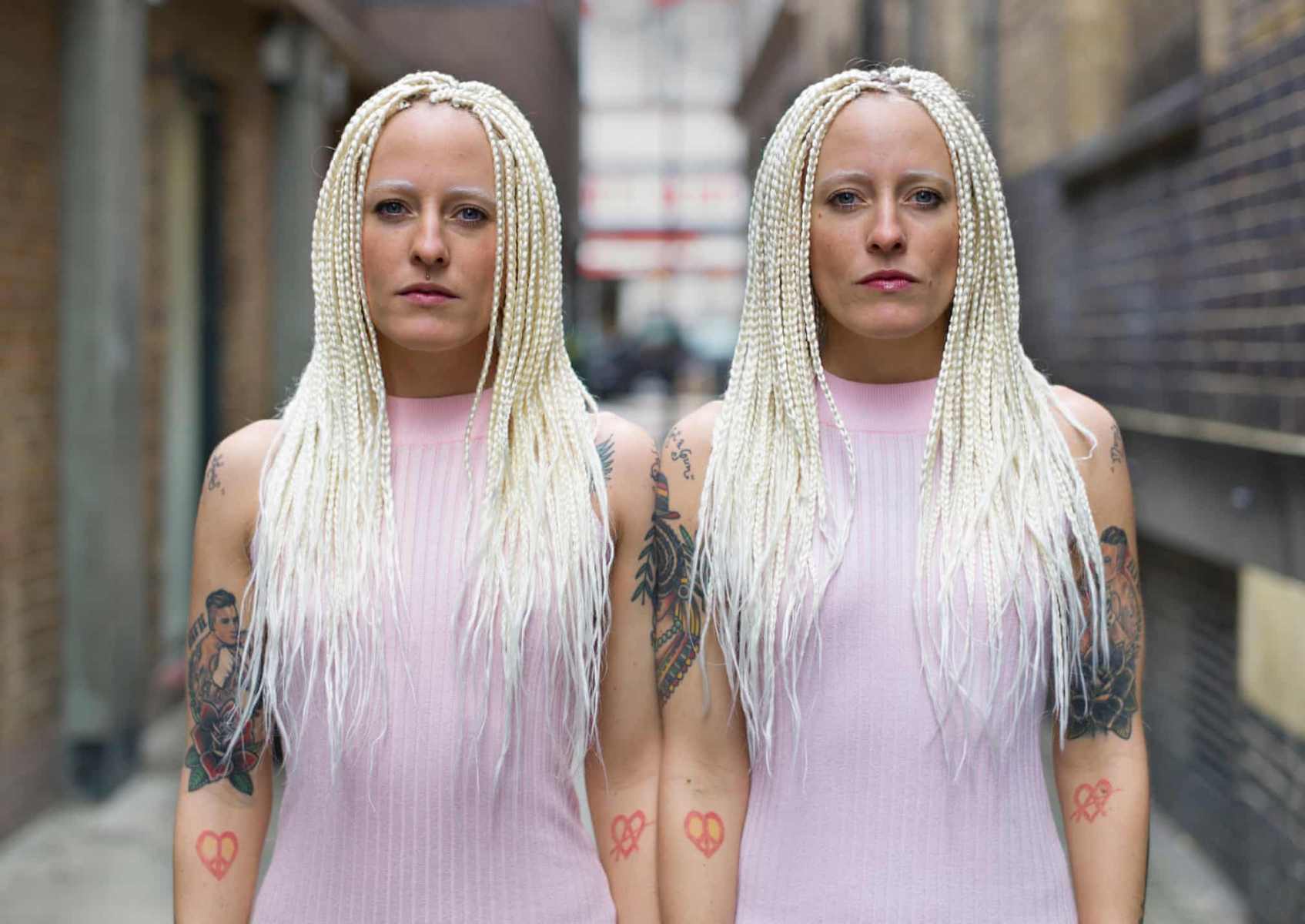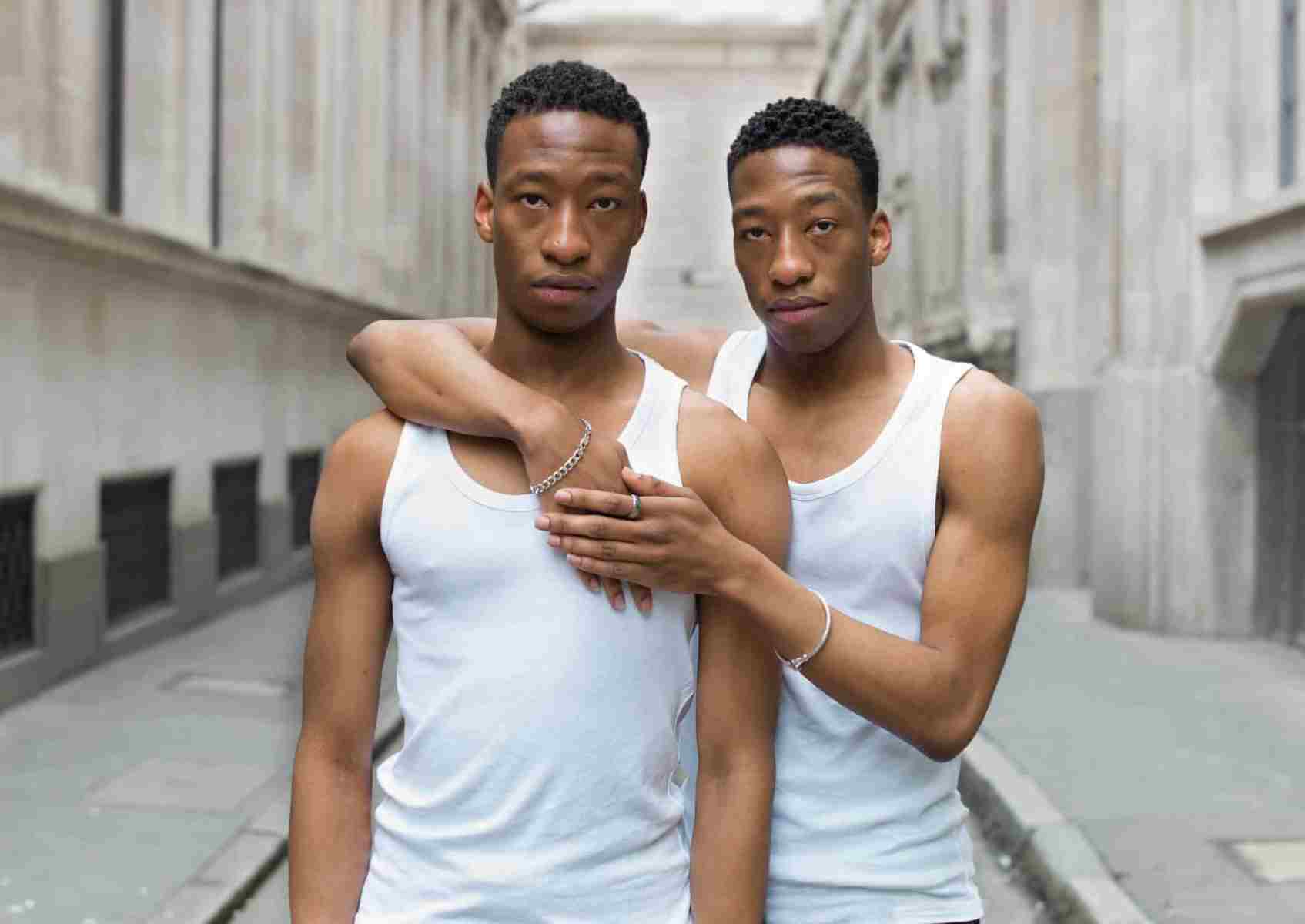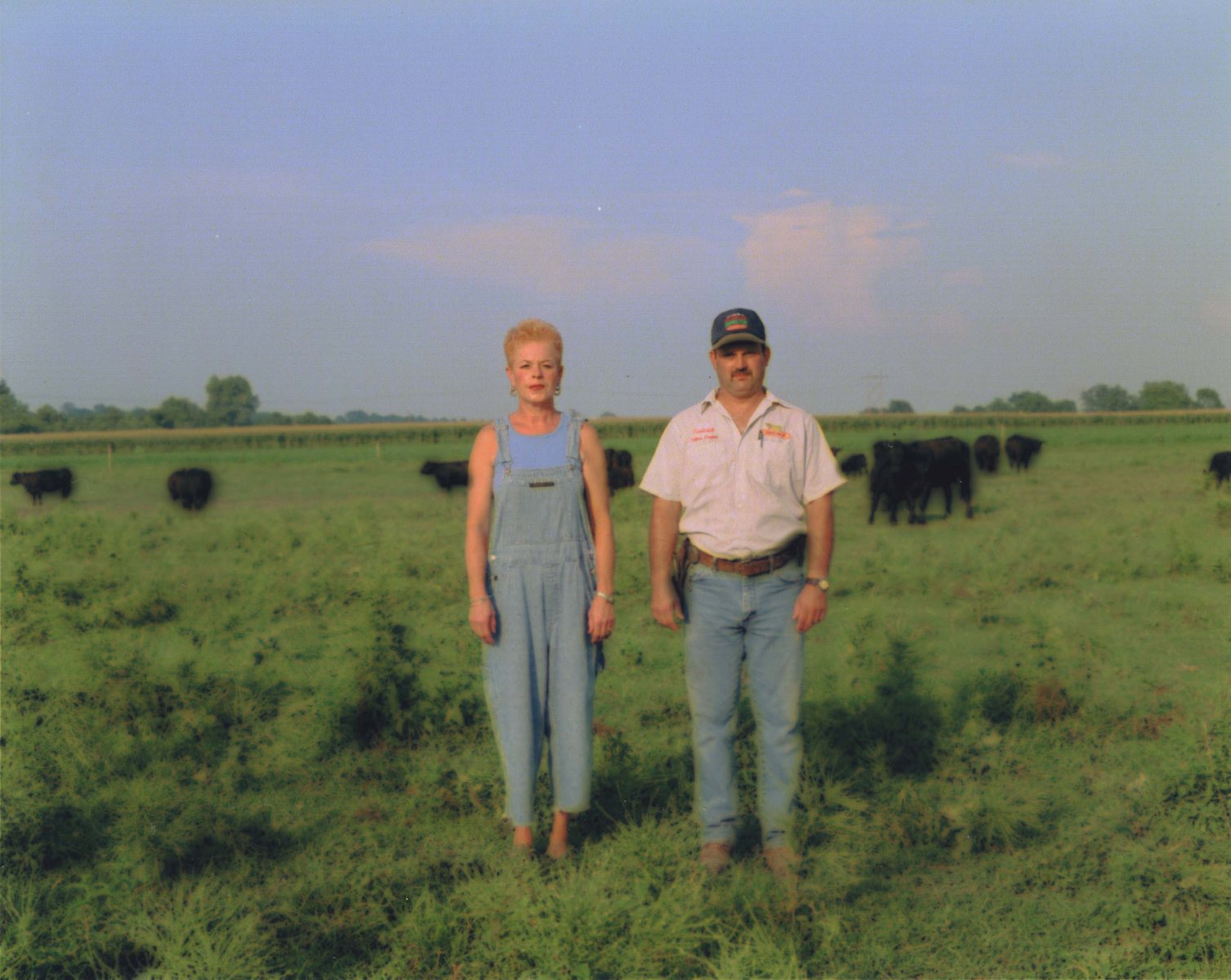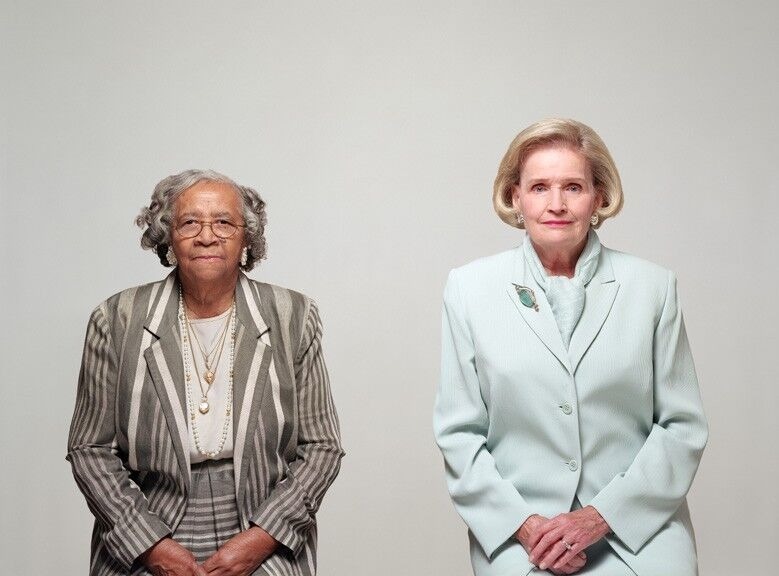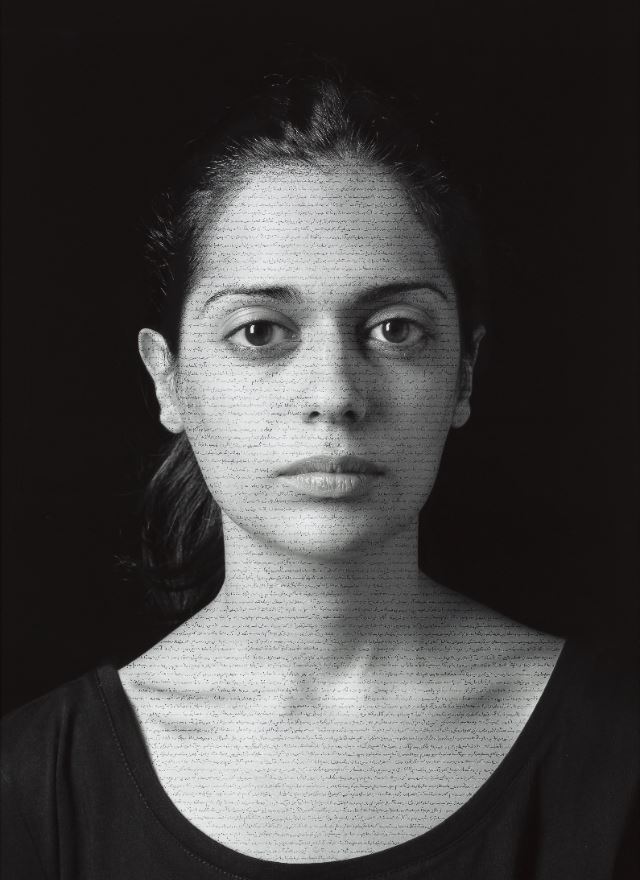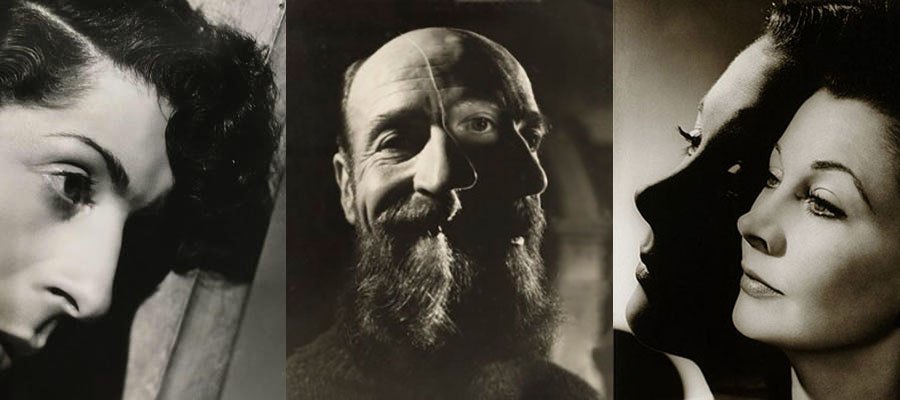Assignment 2 WriteUp
Create a series of between six and ten photographs on one of the following subjects:
- Things
- Views
- Heads
Some of the examples given above are for collections of photographs, others for photographs of collections, but whichever way you go, your set will be stronger if it relates in some way to your interests in life and photography.
Twins
Twins, and specifically, their status and standing within different cultures and mythologies have had mixed fortunes over the centuries. In some, their 'arrival' was considered auspicious while in others it was ominous-bad 'Juju'; often seen as opposites, sometimes feared, in many, they were seen as 2 parts of a whole.
I am a parent of identical twin girls. Over the years I've come to experience different types of reaction to them; from people staring-gawking- to the mundane and stereotypical comments- 'oh oh double trouble', 'you have your hands full', 'how do you remember their names', to the unconscious perception that they are somehow one entity. In junior and primary school teachers often referred to them as 'the girls', 'the twins', and would often mix up their names denying them their individuality. As did friends and family- well-meant but the same outcome.
It seems that people see two people but see no one.
For Hannah and Grace, all this passes (ed) them by. They are 2 individuals with their own interests, tastes, and view on life. They are as close as any family siblings and laugh, argue, compete, and drive each other nuts in equal measure. Now in their teens, they cultivate, explore, and wear identities that are fluid and of the moment.
But there are subtle complications as their identities are intertwined, interdependent and connected.
This series of photos is an observation of twin identity and relationships- what is seen and not seen. Independence and interdependence. Through the lens of a camera and the eyes of a parent.
Approach
Faces are malleable. A smile is intentional and might indeed indicate happiness, just as a furrowed brow might be proof of a melancholic temperament. But we also know that emotion is fleeting and can be faked. We thus shouldn’t really trust whatever it is a photographic portrait seems to be telling us. Cole,Teju 2018 New York Times
Once I decided on the subject of 'Heads', I began to research the work of other photographers and artists as well as the principles, practices, and techniques of portraiture photography. I delved into back issues of the British Journal of Photography, trawled the Internet-following links from one article to another on a journey of discovery that revealed to me that there was an almost constant reworking of concepts behind traditional portraiture, challenging and inspiring in equal measure. I looked at practitioners of different types of portraiture including some who focus on twins as their subject matter including:
Peter Zelewski is a London-based portrait and documentary photographer from Detroit and his series 'Alike but not Alike' looks at different sets of twins, exploring their obvious similarities, differences, and the bonds that run deep between them as highlighted through snippets of commentary that tell us about Eritrean born sisters Hermon and Heroda who both lost their hearing at the same time when they were only 7 years old or Sophie and Polly, monozygotic twins who are so identical they have matching fingerprints meaning their DNA is almost 100% identical. All photos are shot outdoors against backdrops that keep the focus on the subjects and offer no clues about them or their social context-although all are very well dressed.
This series helped me decide to focus on the identity and individuality of Hannah and Grace. Although beautifully shot, the fact that the subjects are similarly dressed and the anecdotes are interesting, I felt the series flirted with cliche and took away from each twin's individuality. This was something I was determined to avoid in my series.
Excerpt: The Powerful Connections of Twins:https://www.theguardian.com/artanddesign/gallery/2018/sep/29/the-powerful-connections-of-twins-in-pictures
Stephan Tayo is an Nigerian photographer who has being photographing twins for his ongoing series IBEJI which translated means 'the arrival of two'. Twins have historically been celebrated as a sign of good fortune and luck by the Yoruba people – an ethnic group originating from Yorubaland, an area in and around present-day Nigeria. In an interview, Tayo offered some insight into his intent for the series “The idea was to ask questions that explore the psychology of twins. For example, what impact does having one’s identity defined by another have on one’s understanding of the self? The mythologising of twins often means that many people address them as a single unit, defining their identity through their physical similarity and emotional proximity.”
I could relate to this view and it inspired me to explore the theme of identity but without the physical proximity that may twin portraits use.
Shiren Neshat -an Iranian visual artist whose series 'Women of Allah' looks at the duality of public and private identities in both Iranian and Western cultures, resonated with me as it tackled the complexities of identity. Her photograph 'Roja' from her series 'The book of Kings' struck a chord, her use of very small writing overlaid on the subject was very powerful-was it scripture? something else? I discovered the image in 'The Portrait Issue' by The British Journal of Photography ( Oct 2019) produced in high-quality full-page spread-the medium- high-quality print reproduction played a role in its impression.
Angus McBean (1904 -1990) was a Welsh photographer renowned for his celebrity portraits of British theater greats -Olivier, Novello, Vivial Leigh, Audrey Hepburn, Quintin Crisp, Peggy Ashcroft-the list is long- as well as surrealist compositions and montages. What struck me about his work was the seemingly unlimited creativity he employed in putting his montages together as well as his use of light in his portraits. Bean paid as much attention to his development of negatives and print, as Adrian Woodhouse (1982:14) observed, 'he controlled the manufacture of brilliant textures and tones of his prints, with their velvety blacks, infinite varieties of depth and smoothness of half-tone' Angus McBean Adrian Woodhouse producing brilliant black and white portraits with great use of light and depth. It was this depth that I tried to incorporate into my series.
Research Conclusions
My research for this series surfaced some interesting debates in portraiture around the interplay between the subject, photographer a.k.a artist, and the viewer. The themes of self and identity are ever-present as are context, subjectivity, and the near-impossible goal to be objective. Should photographers intervene and construct portraits? Should permission be sought? If not, is that ethical? How do we capture the essence of a person in a single take or series of photographs? Is it even possible? Where to take inspiration from? traditional art and photography's neediness to be taken seriously? the ubiquitous and commercial practice of fashion photography-creating a cliched fantasy world, or the vernacular of the selfie and social media?
People are complex and there are numerous schools of psychology and related scientific practice that endeavor to explain human behavior and what it means to be human -some are reductive-stripping human identity down to its core while others take into account context, culture, social status, and the plethora of factors that shape our identity and world view. I don't believe that we can capture the essence of a person, or their true personality through photography or a single photograph-the interplay of the sitter, photographer, and viewer is simply too complex opening up a matrix of possible interpretations-change the context and the meaning ultimately changes, but that's our lot-people have many personalities, play many roles in life, and its what makes portraiture so fascinating. The best we can hope for is a representation of the subject caught in a sliver of time that pulls the viewer into a part of the subject's identity and helps us make a connection on some level.
Something I was conscious of during the making of the images was 'the triangle relationship between sitter, photographer, and spectator. On closer inspection, the rituals between the three parties involved often become a complex interplay of power, positioning, and performance' - Art Photography Now Susan Bright. I decided early on that I wouldn't over-direct the images but they are constructionist in approach. The girls dressed the way they wanted and we discussed the concept of twin relationships, identity, and their experience of being a twin. For both of them, it was singular-I'm Hannah, I'm Grace-simples. For me, as their father, I was seeing their individuality and identity through a very different lens (excuse the pun) and its this mix of my experience of them-and how other people react(ed) to them, and their singular but connected individuality and relationships that I tried to capture in the series.
During the shoot, or reviewing the photos afterward, I began to develop my ideas further to get the 'glue' or 'red thread' that attempts to pull the series together. Julie Moos explores the power balances in relationships by photographing people side by side thus encouraging comparisons, and although her series Friends and Enemies 1999-2000 inspired me, it also helped me decide to focus on the connections aspect between the girls- although they strive to be fiercely individual they strongly influence each other.
In total, I did 3 sessions and made some technical decisions upfront. I decided the series would be in black and white and I was going to use lighting to give the photos some depth but abandoned the idea as the natural light from the patio windows worked well and I could even control the light with the blinds. I used a very fast 56mm 1.2 lens (85mm as crop factor 1.53) open wide- I knew I was going to have the girls in the background in some shots so wanted them out of focus and the isolating focus that such a fast lens gives you. (note: initially I was considering using my 55-200 mm lens but dropped and broke it).
I have also given some thought to how I would like the photos to be seen. Ideally hung in a rectangular room with photo hannah_grace-1-of-8 and hannah_grace-8-of-8 at each end, photos hannah_grace-2-of-8 to hannah_grace-4-of-8 on the left wall and hannah_grace-5-of-8 to hannah_grace-7-of-8 on the right wall. If hanging on a wall I would like the sequence to be hannah_grace-1-of-8 to hannah_grace-8-of-8.
Self Assessment
Demonstration of technical and visual skills
Overall I feel I demonstrated a decent degree of technical and visual skills. However, there are some things I would like to develop further and to be honest, to have used in this series.
I would want to have more control over the lighting to use it more creatively to add depth through shadow and light or achieve more even lighting when needed-the subjects wore glasses and it was a challenge to keep reflections out of the shots. I have some very basic lighting but it was insufficient for what I wanted to do so decided to use natural lighting and moved the girls around as needed. I also would (re)consider the positioning of the eyes-in this series most are in top third but I'd like to play with this more, maybe get in tighter, decide if I shot straight on or slightly upwards. Finally, something I learned to appreciate during the sessions is the importance of putting subjects at ease and keeping a positive atmosphere-I had two subjects and a lot going on (in my head!)- the dynamics between the girls made it more difficult to direct them, and patience, as they say, is a virtue.

Sketches for approach
Quality of outcome
I went into the assignment with a rough idea of what I wanted to achieve and as the sessions progressed the concept for the series took shape. I had decided to shoot in portrait but added 2 landscape images to start and finish the series. I tried to keep the black and white conversions consistent and used vignetting to accentuate parts of the images. The narrative within the series starts with how they are (sometimes) not seen, moving through their connection and interdependence to their own individuality before finally giving the viewer the task of comparison -this image was the most constructed of the lot-both are side by side but not touching-there is closeness but also space between.
Demonstration of creativity
I found myself experimenting and trying out things during the sessions. From my initial thoughts and approach to the final set of images, I tried to stamp some personality / personal voice on the images-and with intent. I used double exposure to blend the girls into one shot- a metaphor to how people have seen them as one rather than two individuals. I placed both girls in fore and background, in and out of focus, and in the context of what I wanted to communicate- I feel it worked. The personal voice isn't there yet but that's ok as I will develop that with time.
Context
This assignment has been a journey into the practice, debate, and approaches in portraiture photography. Researching the subject I got a feel for the debates and practices of current and past practitioners. It is, without doubt, an incredibly interesting and complex area of photographic practice. From the simple compositions of Julie Moos to the elaborate tableaux of Tina Barney or the montages of Angus McBean (serendipitously picked up a book on his work in a free bookshop in Exeter) to the more formal compositions of Carl Vandyk (17 January 1851 – 18 November 1931), the practice is open to invention and interpretation. I find it interesting to read reviews and critiques that wax lyrical about images and for me this opens up the debate on the intent of the photographer. Tina Barney commenting on her work offered this insight- 'for me, the fascination of portraiture is in the relationship between the photographer and the subject. For my work to be successful there must be play among several elements: what happens when I am with them and the unplanned things that happen. I take a lot of pictures when I am shooting, I almost go into a trance. It all happens so fast that not until afterward can I see whether all of these elements coalesce' ( Bright 2014:28).
Motivations and intent are not always clear and so we have this complex interaction between the photographer, sitter, and viewer (add the myth machine that builds up around certain photographs- e.g. the copious amount of print about Dorothea Lange's Migrant Mother and then compare it to her account of how she took that image)-and that's what makes portraiture so compelling.
For this assignment, I had a lot going on. I was reading about and absorbing the great works of other artists/photographers, I was also coming to grips with the technical aspects and approaches. All were clamouring for attention but I managed to focus and produce a series of images that I feel work and marry my intent with the final output. Whether that's the case for the viewer is another matter.
Mentor feedback and further reflection.
I rewrote some of the assignment and added the feedback including some practitioners currently in the field and some of the debates that exist around portraiture. I also revised the final edit and replaced photos 4 & 6.
Final word:
Having had time to reflect and expand my photographic knowledge, my view on taking portraiture leans towards never being able to be totally objective and would think that that's actually ok but its a balance. Say you don't know the subject-you may judge them on their appearance, their accent or some other social marker, on the other hand if you know them too well you may see things that other people cant possibly see as it's based on shared history or experience etc. In this series that was the case. The subjects are my daughters and I didn't approach this with enough intent to even try and look at their identity with more objectivity to balance things out. However, I still think the series is worth further exploration and the basis for it is valid.
Bibilography
Bright,S (2014) Art of Photography Now, Revised and expanded edition, London, Thames & Hudsen.
Clarke, G (1997), The Portrait in Photography in The Photograph,United States, Oxford University Press
Cole,Teju (2018),There’s Less to Portraits Than Meets the Eye, and More. https://www.nytimes.com/2018/08/23/magazine/theres-less-to-portraits-than-meets-the-eye-and-more.html
Cotton,C, (2009), Deadpan in The Photograph as contemporary Art,London,Thames & Hudsen
Jenkinson, M (2011) The Portrait Photography Course,Principles,practice and techniques:the essential guide for photographers,London, A&C Publishers
Kelby, S (2020) The Natural light Portrait Book,United States,Rocky Nook
The British Journal of Photogrphy (2019), Portrait edition, pages 12-87
The British Journal of Photogrphy (2020), Ones To Watch
Von Zwehl, T, (2018) Meditations in an Emergency, http://www.bettinavonzwehl.com/meditations-in-an-emergency.html
Von Zwehl, T, (2015) Bloodlines, http://www.bettinavonzwehl.com/bloodlines.html
Von Zwehl, T, (2014) Laments, http://www.bettinavonzwehl.com/laments.html
Von Zwehl, T, (2014) Sospiri, http://www.bettinavonzwehl.com/sospiri.html
Guardian, (2018) https://www.theguardian.com/artanddesign/gallery/2018/sep/29/the-powerful-connections-of-twins-in-pictures
Woodhouse, A (1982) Angus Mcbean, London, Quartet Books
Wikipedia, (2020) Juli Moos, https://en.wikipedia.org/wiki/Julie_Moos
Wikipedia, (2020), Twins in Mythology, https://en.wikipedia.org/wiki/Twins_in_mythology
List of Illustrations
Figure 1. Moos, Julie 'Mae and Margret', Domestics, 2001, http://www.fredericksfreisergallery.com/exhibitions/julie-moos2
Figure 2. Moos, Julie 'Katy and Fred', Monsanto series, 1999, https://renaissancesociety.org/exhibitions/431/julie-moos-monsanto/
Figure 3. Neshat, Shiren, 'Roja' Book of Kings, 2012, https://kayhanlife.com/culture/art/shirin-neshat-to-get-her-first-ever-west-coast-retrospective-at-the-broad-in-la/


